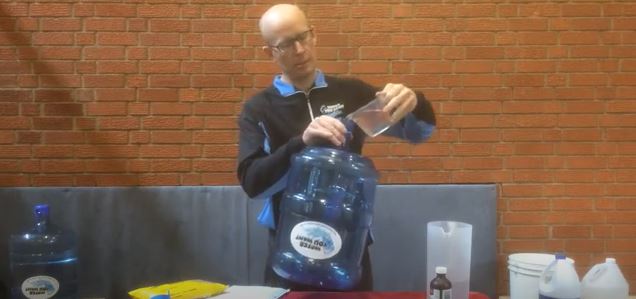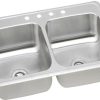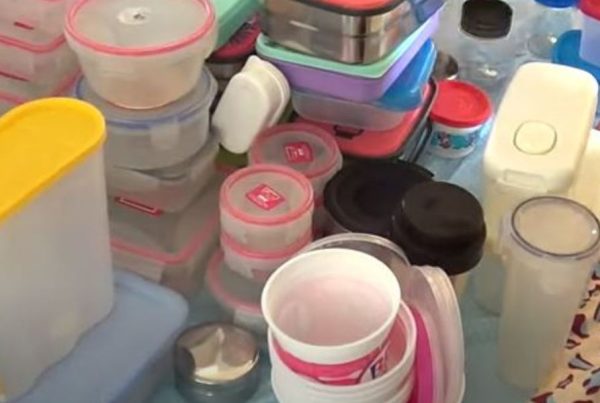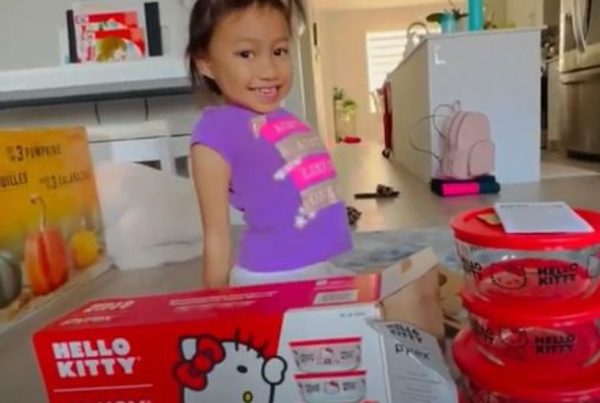How do you properly clean a 10-gallon food is essential for ensuring the safety and freshness of your stored food items. Whether you use it for bulk food storage, meal prepping, or preserving leftovers, a clean food container is crucial to prevent contamination and spoilage. This comprehensive guide will delve deeper into the importance of cleaning, provide expert tips on how to do it effectively and address common questions related to food storage container hygiene.
Why Proper Cleaning Matters
Properly Clean a 10-Gallon Food storage goes beyond just aesthetics and How do you properly clean a 10-gallon food? It is a matter of food safety and overall health. Here are some reasons why proper cleaning is crucial:
Prevents Bacterial Growth
Food residues left in containers can become breeding grounds for bacteria. Without regular cleaning, harmful pathogens can multiply, potentially causing foodborne illnesses.
Reduces Cross-Contamination
Cross-contamination can occur if you use the same container for various food items without cleaning it thoroughly. This means that flavors and odors from one food item may transfer to another, altering the taste and quality of your stored food.
Extends Container Lifespan
Proper cleaning and maintenance can extend the lifespan of your 10-gallon food storage container. Regular cleaning prevents the buildup of stains, odors, and residue, preserving the container’s integrity and usability.
Preserves Food Quality
Properly Clean a 10-gallon Food storage ensures your food remains fresh and free from contaminants. Storing food in a dirty container can cause it to spoil quickly and affect its taste and texture.
Avoids Unwanted Pests
Residues and crumbs left in the container can attract pests like ants and cockroaches. Keeping the container clean helps keep these unwanted visitors away from your food storage area.
Step-by-Step Guide to Properly Clean a 10-Gallon Food Storage Container
Follow these step-by-step instructions to ensure your food storage container remains clean and safe to use and How do you properly clean a 10-gallon food:
Empty and Discard Contents
How do you properly clean a 10-gallon food? Before cleaning, empty the container of any remaining food items. Dispose of expired or spoiled food appropriately, and avoid leaving any food residues in the container.
Pay Attention to Seals and Lids
Check the seals and lids of the container for any trapped food particles or residues. Clean them thoroughly to maintain a tight seal and prevent bacterial growth.
Sanitize with Vinegar
Create a solution of equal water and white vinegar for an extra layer of cleanliness. How do you properly clean a 10-gallon food? Use this mixture to wipe down the entire container. Vinegar acts as a natural disinfectant, effectively killing germs and bacteria.
Address Lingering Odors with Baking Soda
How do you properly clean a 10-gallon food? If your food storage container retains odors, dust some baking soda inside and let it sit for a few hours. Baking soda is excellent for absorbing unwanted smells.
Air Dry Completely
After cleaning, allow the container to air dry thoroughly. Escape using a towel to dry it, as towels may carry germs and bacteria.
Store with Lid Off
Store your food storage container with the lid off to allow air circulation when not in use. This practice prevents moisture buildup, reducing the risk of mold and mildew growth.
Best Practices for Maintaining How do you properly clean a 10-gallon food
Maintaining a clean and hygienic food storage container involves adopting some best practices:
Regular Cleaning Schedule
Set a regular cleaning schedule for your 10-gallon food storage container. Depending on usage, aim to clean it at least once a week or after every use.
Avoid Harsh Cleaners
keep from using harsh chemicals or abrasive cleaners when cleaning your food container. Stick to mild, food-safe soaps and natural cleaning agents like vinegar and baking soda.
Designate Containers for Specific Foods
If you use your 10-gallon container for various food items, consider designating specific containers for different types of food. This helps prevent cross-contamination and maintains the integrity of each food’s flavor.
Inspect for Damage
Regularly inspect your food storage container for any signs of harm, such as cracks, chips, or loose lids. Damaged containers can compromise food safety and should be replaced immediately.
Avoid Storing Hot Food
Avoid storing hot food in plastic food storage containers, including 10-gallon ones. High temperatures can cause plastic to release harmful chemicals into the food. How do you properly clean a 10-gallon food?
Frequently Asked Questions (FAQs)
Q: Can I use bleach to clean my 10-gallon food storage container?
A: While bleach is an effective disinfectant, it is not recommended for cleaning food containers. The strong chemicals in bleach can leave harmful residues and contaminate your stored food. Stick to milder, food-safe cleaning agents like vinegar and soap.
Q: Is cleaning my food storage container in the dishwasher safe?
A: Most food storage containers are dishwasher-safe, but it’s essential to check the manufacturer’s guidelines. If the container is dishwasher-safe, place it on the top rack to avoid exposure to excessive heat and potential warping.
Q: Can I use scented soap to clean my food storage container?
A: It’s best to avoid scented soaps when cleaning food storage containers. Fragrant soaps may leave residues that alter the taste and smell of your stored food.
Q: How often should I replace my food storage container?
A: Food storage containers have a limited lifespan, and it’s essential to replace them when they show signs of wear, such as cracks, scratches, or loose lids. Generally, replace your food storage container every 6-12 months.
Q: Can I store hot food in my 10-gallon container?
A: It’s not recommended to store hot food in plastic food storage containers, including 10-gallon ones. High temperatures can cause the plastic to release harmful chemicals into the food. Instead, opt for glass or stainless steel containers for hot food storage.
Handling Persistent Stains and Odors
Even with regular cleaning, you may encounter stubborn stains or lingering odors in your food storage container. Here are some additional tips for tackling these issues effectively:
Lemon Juice for Stains
Lemon juice is a natural and effective stain remover. Squeeze fresh lemon juice onto the stained areas of your container and let it sit for a few minutes. Then, scrub the stains with a sponge or cloth. Lemon’s acidic properties will help break down tough stains.
White Vinegar Soak
For persistent stains or odors, create a white vinegar soak by mixing water and white vinegar. How do you properly clean a 10-gallon food? Submerge your food storage container in the solution and let it soak for a few hours or overnight. How do you properly clean a 10-gallon food? The vinegar will help break down stains and eliminate odors.
Safety Precautions and Tips
While cleaning your 10-gallon food storage container is essential, keeping safety in mind is also crucial. Here are some safety precautions and tips to consider:
Use Food-Safe Cleaning Products
Always use cleaning products that are labeled as safe for use on food containers. Avoid using industrial or household cleaning agents that may contain harsh chemicals harmful to health.
Check Manufacturer Guidelines
If your food storage container comes with specific cleaning instructions from the manufacturer, follow them. Some containers may have specific temperature limitations or may not be dishwasher-safe.
Regularly Inspect for Wear and Tear
Regularly inspect your food storage container for any signs of wear and tear. Look for cracks, chips, or damaged seals that may compromise the container’s functionality. Replace damaged containers to ensure food safety.
Separate Containers for Raw and Cooked Foods
To avoid cross-contamination, use separate containers for raw and cooked foods. This practice reduces the risk of harmful bacteria spreading from natural foods to cooked ones.
Conclusion
Properly cleaning a 10-gallon food storage container is crucial for maintaining food safety, preserving food quality, and extending the container’s lifespan. Following the step-by-step guide and best practices outlined in this article, you can ensure that your food storage container remains in top-notch condition. Regular cleaning, using mild and food-safe cleaning agents, and addressing persistent stains and odors will keep your container fresh and safe for storing food items.
Remember to inspect your container regularly for any signs of wear and tear and replace it when necessary to maintain optimal food safety standards.How do you properly clean a 10-gallon food? With these tips, you can confidently keep your 10-gallon food storage container clean and ready for all your culinary adventures!













